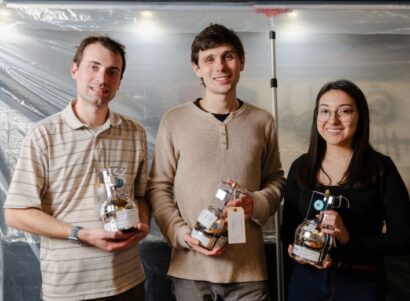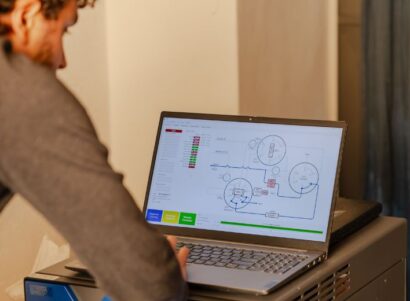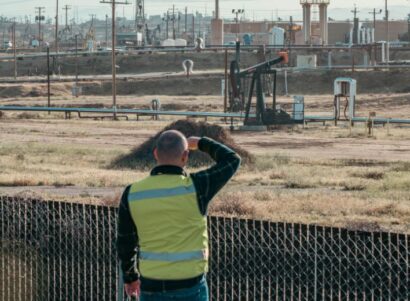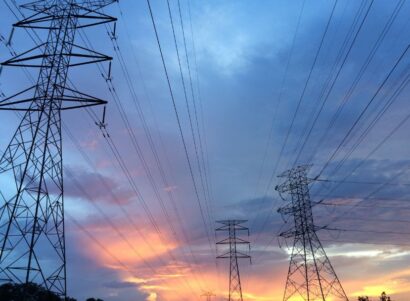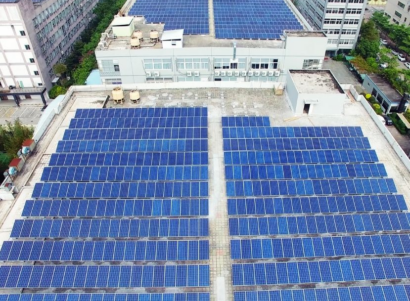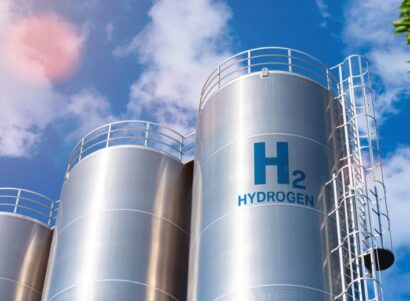In the face of increasing climate change impacts—from water shortages to wildfires—Colorado has passed state legislation that aims to cut greenhouse gas emissions 50% by 2030 and 90% by 2050 (compared to 2005 levels). In order to achieve these reductions, the state must implement measures that reduce reliance on fossil fuels and replace them with clean energy and energy saving technologies, such as renewable energy, energy efficiency, and electric vehicles.
As Colorado begins the transition to this cleaner energy system, existing economic and health inequities must be addressed. Failing to take into account the disproportionate burdens our current energy system places on lower income rural and urban households increases the risk that these barriers will persist as Colorado decarbonizes its energy systems.
Figure 1a: Residential Energy Cost Burdens by Census Tract
Figure 1b: Top 25 Census Tracts for Energy Cost Burden
PSE recently published a report on decarbonization pathways for Colorado, focusing on the systemic equity challenges mentioned above. In this report, we highlight equity concerns with Colorado’s energy system and how these concerns should be addressed in decarbonization policy. Figure 1a and 1b above summarizes some of our findings and highlights current inequities in access to energy. Our report shows that these inequities are in part due to inefficiencies in energy distribution and low household incomes across Colorado. For instance, many households pay a disproportionate percentage of their income on their residential energy needs (electricity, heating, etc).
The Colorado Energy Office estimates that households qualify as energy cost burdened if their energy spend exceeds 4% of their monthly household income. Many census tracts in Colorado exceed a 4% cost burden, with some census tracts spending as much as 14% of their household income on energy needs. Given that census tracts are roughly the size of neighborhoods, it is fair to assume that individual households might be paying significantly more as a percentage of their income. We calculated these values by dividing the average household utility bills by the median household income per census tract.
Figure 3: Household Energy Use and Cost Burden
As Figures 2 and 3 note, these cost burdened households are not using more electricity and natural gas than their less-burdened counterparts—they use these fuels at roughly the same, if not lower rates. Broadly speaking, rural counties face the highest energy cost burdens—22 of the 25 census tracts with the highest residential energy cost burden are in rural counties. Many rural areas have an increased dependence on wood and liquefied petroleum gas (LPG) as fuel sources (Figure 2), but roughly the same electricity use rates. This disparity increases the cost burden of rural residents compared to their urban counterparts. Additionally, burning wood increases indoor air pollution, which is linked to adverse health outcomes, and rural areas often face geographical and financial hurdles to adopting renewable energy and other clean technologies, like electric vehicles.
Examining energy-related health burdens tells a second story: while rural areas face the worst financial burden in energy usage and elevated risks of indoor particulate matter pollution from wood burning, Figure 4 below shows that urban census tracts generally face much higher risks of health hazards from outdoor fossil fuel pollutants. Toxins like fine particulate matter (PM2.5) are linked with health impacts, including respiratory irritation, asthma, decreased lung function, nonfatal heart attacks, and premature death in individuals with heart or lung disease.
PM2.5 emissions largely come from the combustion of fossil fuels, and urban areas—with denser populations, vehicle traffic, and urban highway corridors—frequently face elevated levels of PM. Our analysis found that Colorado’s urban areas also have a higher proportion of racial minority groups, who are overrepresented in PM2.5 exposure and risks from air toxins (Figure 4 below). While the direct energy cost burden in many of these urban tracts is not as high as in their rural counterparts (though many still exceed 4%), outdoor exposure to health-harming pollutants linked with fossil fuel burning (PM2.5, ground-level ozone) tend to be higher in these areas than on average.
Figure 4: Community Exposure to PM2.5 and Air Toxics
While the inequities created by Colorado’s current energy system may seem unique for urban and rural residents, they have more in common than divides them. Both urban and rural communities can face elevated economic or environmental burdens from fossil fuel production and use. Both bear health burdens from fossil fuels–rural areas from indoor air pollution and urban areas from cumulative outdoor pollution.
Unless Colorado enacts specific policies to address existing inequities in our energy system and expand access to cleaner technologies, these vulnerable communities will be slow to adopt clean energy technologies (rooftop and community solar, electric vehicles, etc.) that would benefit them the most. Rooftop solar, while often providing economic savings in the long run, as well as resilience and reliability benefits in rural areas, has high capital costs that make it inaccessible to lower-income households, renters, and other underserved groups who would otherwise benefit from the cheaper electricity provided.
Likewise, widespread adoption of electric vehicles would help lower carbon emissions while reducing health-damaging pollutants like PM2.5, particularly along urban highway corridors (although much of the emissions in these areas come from heavy truck activity). As with solar, the high upfront costs of a new electric vehicle are barriers for lower-income households. Additionally, a California study found electric vehicle charging stations tend to be installed in more affluent areas, adding one more barrier to entry for many neighborhoods with low EV adoption rates. Lower income neighborhoods and communities of color also tend to drive older, less efficient cars with higher emissions of health-damaging pollutants, and so would greatly benefit from zero-emission electric vehicles.
In order for Colorado’s ambitious emissions reduction goals to ensure greater equity and public health, decarbonization strategies must acknowledge the disproportionate financial and health burdens our current system places on low income rural and urban neighborhoods and communities of color. At the same time, we must take stock of existing and potential barriers to access for newer, cleaner energy technologies. Policies that help lower barriers to entry for rooftop solar, energy efficiency, and vehicle electrification would accelerate Colorado’s decarbonization while lowering health and socioeconomic strains on its most overburdened populations. In the end, these actions benefit all Coloradans by advancing a healthier and more equitable Colorado.
For more detailed information on Colorado energy equity, please see PSE’s report: Equity-Focused Climate Strategies for Colorado.
*Air Toxics data from EPA National Air Toxics Assessment (NATA)




